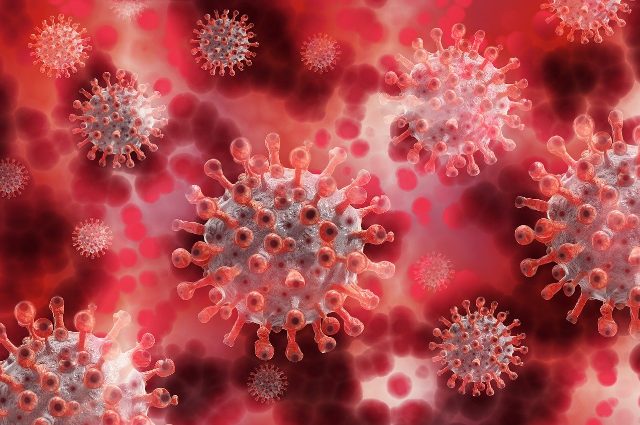
Coronaviruses are a type of virus. There are many different kinds, and some cause disease. A coronavirus identified in 2019, SARS-CoV-2, has caused a pandemic of respiratory illness, called COVID-19. COVID-19 is severe, and has caused millions of deaths around the world as well as lasting health problems in some who have survived the illness. The coronavirus can be spread from person to person. It is diagnosed with a laboratory test. COVID-19 vaccines have been authorized for emergency use by the U.S. Food and Drug Administration, and vaccination programs are in progress across the U.S. and in many parts of the world. Prevention involves physical distancing, mask-wearing, hand hygiene and staying away from others if you feel sick.
How does the coronavirus spread?
As of now, researchers know that the coronavirus is spread through droplets and virus particles released into the air when an infected person breathes, talks, laughs, sings, coughs or sneezes. Larger droplets may fall to the ground in a few seconds, but tiny infectious particles can linger in the air and accumulate in indoor places, especially where many people are gathered and there is poor ventilation. This is why, mask-wearing, hand hygiene and physical distancing are essential to preventing COVID-19.
How did the coronavirus start?
The first case of COVID-19 was reported Dec. 1, 2019, and the cause was a then-new coronavirus later named SARS-CoV-2. SARS-CoV-2 may have originated in an animal and changed (mutated) so it could cause illness in humans. In the past, several infectious disease outbreaks have been traced to viruses originating in birds, pigs, bats and other animals that mutated to become dangerous to humans. Research continues, and more study may reveal how and why the coronavirus evolved to cause pandemic disease.
What is the incubation period for COVID-19?
Symptoms show up in people within two to 14 days of exposure to the virus. A person infected with the coronavirus is contagious to others for up to two days before symptoms appear, and they remain contagious to others for 10 to 20 days, depending upon their immune system and the severity of their illness.
Taking Care of Yourself When You Have COVID-19
If you are diagnosed with coronavirus or think you might have it, here’s how to care for yourself and family members.
STAY HOME UNTIL:
Stay inside You have not had a fever for at least 72 hours (that’s three full days of no fever without taking any fever reducing medicine)
Other symptoms, such as cough or shortness of breath, have improved
At least seven days have passed since your symptoms first appeared
LEAVE HOME ONLY:
Monitor your symptoms and stay in touch with your doctor if you feel worse.
Call before you go to any health care setting.
STAY AWAY FROM OTHERS:
At home, stay away from family members and pets.
Wear a facemask if you have to be around others to protect them from your cough and sneeze droplets.
Do not share dishes, drinking glasses or cups, eating utensils, towels or other bedding with people in your home. Wash these items thoroughly after each use.
Clean and disinfect surfaces including sinks, microwave, refrigerator, toilets, shower, bath, etc., after you use them.
Wear a facemask and gloves if you need to be around family members and pets.
TAKE CARE OF YOURSELF:
Get plenty of rest.
Drink lots of fluids.
Keep warm.
Use a humidifier or take a hot shower for sore throat and cough.
Take acetaminophen, ibuprofen or naproxen to reduce fever and relieve aches and pains.
Eat healthy foods.
Clean your hands often with soap and water for at least 20 seconds after you blow your nose, cough, sneeze, use the bathroom, and before eating or preparing food.
Use alcohol-based hand sanitizer with at least 60% alcohol if soap and water are not available.
